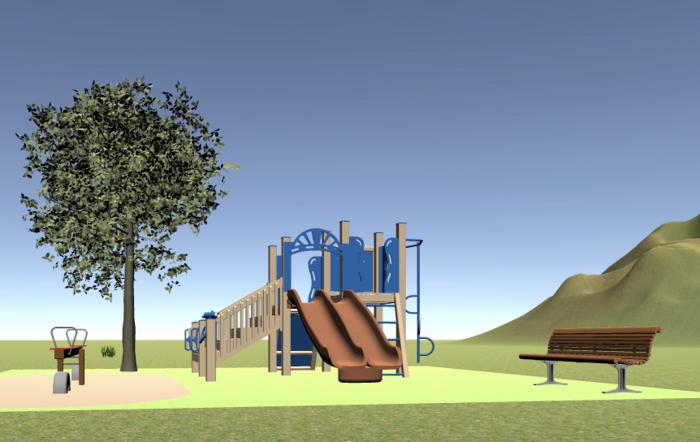
For decades, prevailing thought in behavioral neuroscience has held that children develop the capacity for map-based navigation—the skill of using landmarks to traverse large-scale spaces—only around the age of 12. However, a groundbreaking study from Emory University is now challenging this long-standing assumption. Through innovative experiments combining advanced brain imaging techniques with immersive virtual environments, researchers have uncovered compelling evidence that children as young as five possess the neural architecture necessary for sophisticated spatial navigation.
This pioneering study was recently published in the journal Proceedings of the National Academy of Sciences, marking the first direct neural demonstration that the cognitive underpinnings for map-based navigation are present far earlier in childhood than previously thought. Yaelan Jung, a postdoctoral fellow in Emory’s Department of Psychology and the lead author, emphasizes that while the ability for large-scale navigation continues to refine throughout development, the foundational brain systems facilitating this capability are startlingly well established by age five.
The research hinges on examining the retrosplenial complex (RSC), a select region within the visual cortex deeply implicated in processing spatial layouts and facilitating navigational memory. Prior work has illustrated the division of labor among scene-selective brain regions: the parahippocampal place area (PPA) identifies and categorizes environmental scenes, the occipital place area (OPA) supports immediate, obstacle-aware locomotion, and the RSC integrates spatial information into coherent mental maps enabling navigation across broader spaces. The current study sought to determine when these systems mature during early childhood.
To probe the navigational capabilities of very young participants, the researchers developed “Tiny Town,” a simplified virtual environment that distills spatial complexity down to an intuitive triangular layout, contrasting with a previously used adult-oriented design known as Neuralville. Within Tiny Town, distinctive natural landmarks such as mountains, trees, and lakes demarcate each corner, providing clear orientation cues. The town’s structures included familiar child-interest categories like ice cream shops, playgrounds, and fire stations, strategically placed to assess children’s ability to recognize locations and their spatial relationships.
The experimental procedure employed functional magnetic resonance imaging (fMRI) to noninvasively monitor brain activity as five-year-old children navigated through Tiny Town. Crucial to the success of the study was the innovative and child-friendly training protocols that acclimated the participants to both the virtual navigation task and the scanning environment. Flynn-folding familiarization with the controls and the game-like nature of the task ensured the children’s engagement, reducing anxiety and securing their compliance for stillness during scans—a challenging prerequisite for quality neuroimaging data.
Results revealed that even at this tender age, participants demonstrated significant activation in the retrosplenial complex consistent with neural patterns observed in adults performing analogous navigational tasks. This finding provides robust neural evidence that the spatial mapping capabilities enabling children to differentiate locations and traverse environments mentally are not only emerging but functionally established well before previous behavioral studies suggested.
Interestingly, the study also elucidates a seeming paradox in developmental neuroscience: while children gain walking ability by the age of two, the brain network supporting immediate obstacle avoidance and real-world locomotion around them, linked to the occipital place area, doesn’t look adult-like until around age eight. This suggests that map-based navigation—the construction and mental manipulation of spatial representations—may have an earlier developmental trajectory than direct sensory-motor navigation of immediate surroundings.
These insights shed new light on the complexity and timing of spatial cognition development and challenge researchers to rethink assumptions regarding when core navigational systems come online. They also open questions about the experiences and environmental interactions that might nurture or impede the maturation of these critical brain circuits during early childhood.
The innovative use of neuroimaging coupled with carefully crafted virtual environments exemplifies the growing convergence of technology and developmental neuroscience. By translating complex spatial tasks into accessible and engaging experiences for children within the controlled setting of an MRI scanner, researchers can now peer into the infant brain with unprecedented granularity. This approach is crucial for advancing our understanding of normative brain development as well as identifying early markers of atypical spatial cognition that could herald developmental disorders.
Beyond scientific curiosity, the implications of these findings are broad and impactful. Understanding the timeline and mechanisms of navigational brain system maturation could inform early educational practices, influence the design of interventions for children with neurodevelopmental challenges, and guide the development of assistive technologies to support spatial learning. Furthermore, decoding the early emergence of these abilities enriches our comprehension of how humans interact with and learn about their environments from the very beginning of life.
The study also highlights the challenges and rewards of conducting neuroimaging research with very young children. Strategies like mock scanners, playful training routines, and creating a cozy, movie-theater-like atmosphere helped ease anxieties and maintain attention, turning a traditionally intimidating setting into a positive scientific adventure. Principal investigator Daniel Dilks notes how these successes encourage continued efforts to push the boundaries of developmental neuroimaging, particularly as they now embark on studying toddlers—whose natural resistance to instruction and stillness poses even greater experimental challenges.
Ultimately, this research underscores the remarkable capabilities of young minds to build and use complex mental models to navigate the world around them. By demonstrating that foundational navigational brain systems come online much earlier than anticipated, the findings refocus scientific discussion and highlight the dynamic interplay between brain development, experience, and cognition during the formative years of human life.
Subject of Research: People
Article Title: Early development of navigationally relevant location information in the retrosplenial complex
News Publication Date: 5-May-2025
Web References: 10.1073/pnas.2503569122
Image Credits: Dilks lab, Emory University
Keywords: Developmental neuroscience, Cognitive neuroscience, Neuroimaging, Neurophysiology
Tags: brain imaging studieschild psychology researchchildren’s navigation skillscognitive neuroscience breakthroughsearly cognitive developmentEmory University researchfoundational brain systemsmap-based navigation abilitiesneural architecture in childrenretrosplenial complex functionspatial navigation in childrenvirtual environment experiments





